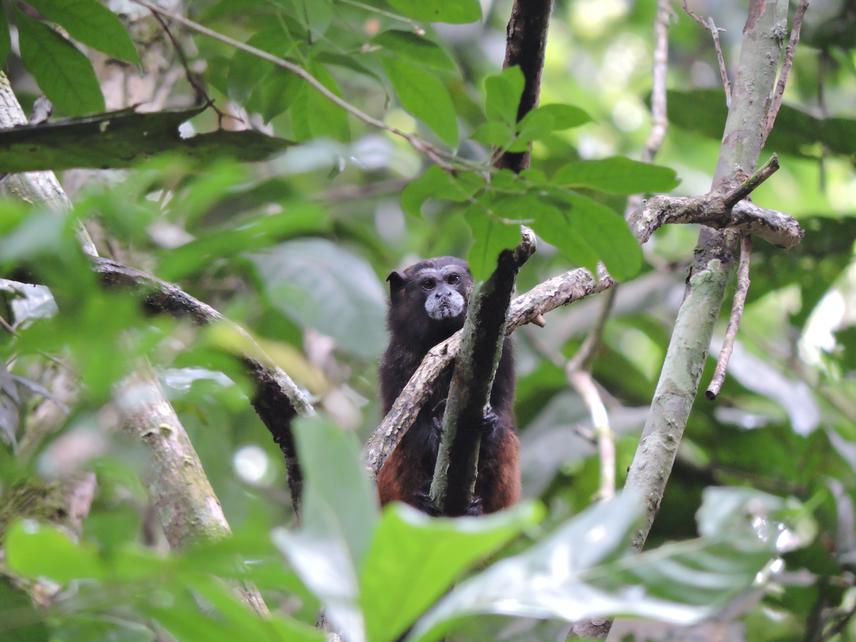Cecilia Beatriz Barriga Bahamonde
My project’s aim is to highlight the importance of the diversity of fruit-eating mammals, such as primates, ungulates, and rodents, in relation to the provision of ecosystem services relevant to local communities in the Peruvian Amazon forest. To achieve this, I determined two objectives. First, I will identify the relationship between how the community of fruit-eating mammals is structured and the establishment of plants that are dispersed by those animals and used by the indigenous communities. And second, I will relate the mammal’s community structure to three ecosystem services, wild meat, wild fruit, and raw material provision.

Indigenous communities rely on fruit-eating mammals as meat and on the plants these animals disperse for a variety of uses such as food, construction, and crafts. In one of the most biodiverse regions in the world, the Southern Peruvian Amazon, fruit-eating mammals play an essential role in dispersing seeds, but human impacts threaten these species’ survival and the vital contributions they provide to us and the ecosystem through ecosystem services. The relationship between mammal diversity and the benefits they provide is not well known while trade-offs between the direct consumption of these animals to wild fruits and raw material provision have not yet been studied in the field.
My research will be carried out in three indigenous communities: Boca Pariamanu, Infierno, and Palma Real, in Madre de Dios, Peru. For my first objective, I will survey large and medium bodied terrestrial mammals using camera traps, and arboreal mammals through line transect for direct observations. I will estimate species richness, diversity index, abundance, and functional dispersion indices. Then, I will select plant species that are mainly dispersed by these mammals and used by the indigenous communities as food and raw materials. I will survey these plant’s saplings in the same area, and I will relate the sapling density and dispersion index to the mammals’ measurements. For the second objective, I will measure the ecosystem services of wild meat, wild fruits, and raw materials provision contributed by selected mammals and plants and relate them to the fruit-eating mammals. The provision of these benefits will be assessed through hunter or collector and household surveys. I will estimate the harvestable yield or volume for each site.
This project will provide valuable information for forest managers and conservationists, fostering sustainable development in local communities. It will contribute to the increasing efforts to assess the relationship between the biodiversity of high trophic-level organisms and ecosystem services in a megadiverse area. My work will be applicable to other communities living in the same area and can be replicated in other places with similar conditions. Finally, it will contribute to the ultimate goal of sustainable development and biodiversity conservation in megadiverse areas without excluding human communities.